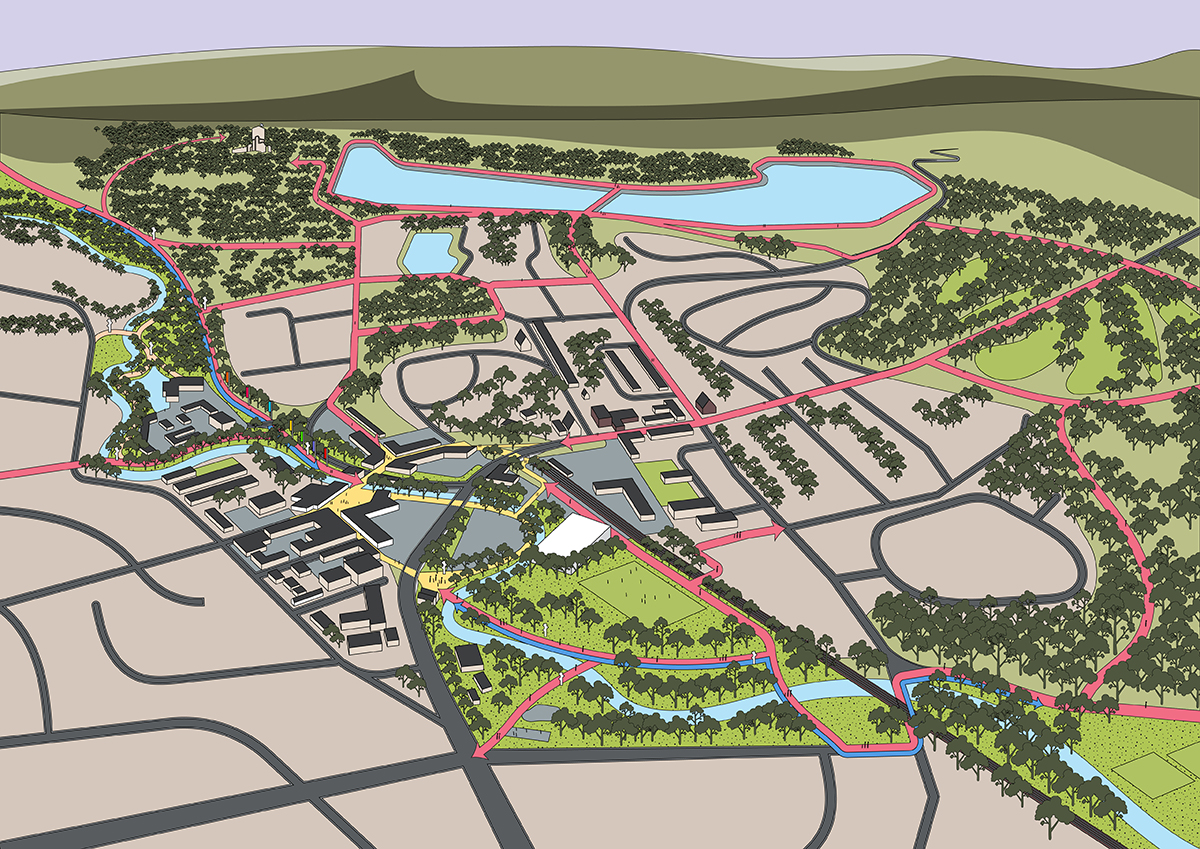
PAGE\PARK has unveiled a new suite of furniture and wayfinding installations in the centre of Milngavie. Creating a new gathering point for locals and visitors, the project was delivered for client Milngavie BID, and completed on-site last year by Glasgow-based contractor Sculpture and Design Ltd.
It follows Page\Park’s work in 2018 to create an impressive starting point to the West Highland Way, which attracts some 85,000 walkers from around the world each year. Page\Park used a palette of corten steel and timber to create 96 posts featuring different artworks – the number representing the number of miles to Fort William, where the route finalises.
“A big thing during the project has been the trust from locals,” David Wyllie, architect at Page\Park told Project Scotland. “When we did the West Highland Way project, a lot of people in Milngavie didn’t know who Page\Park was – and the community had a lot of questions, particularly in terms of the materials we used such as corten steel which was very much a new material being introduced to the precinct.”
The architect, who formed part of a three-man team alongside Fraser Maitland and Mark Johnston, heaped praise on locals – in particular community group Milngavie BID – who were proactive in helping them shape plans for the new £240,000 gathering point which sits at a key town centre node.
The bespoke seating area uses the same materials as the West Highland Way installation, and is capable of hosting larger groups – with the architects envisioning locals and tourists using it as a preparation point before they embark on the famed route. However, it is not tailored solely to walking. A screen of wayfinding and graphics help guide visitors around the town, as well as artwork on the paving that depict the lochs, rivers, and tributaries running through and around Milngavie, and the wider Scottish lowlands.
“After the locals saw the success of the West Highland Way, there was more trust and faith in what we would deliver,” David added. “We kept the same design team (including Woolgar Hunter Engineers, Doig & Smith Quantity Surveyors, and Principal CDM) and they’ve really gotten to know us personally and as a company, and we’ve really gotten to know them quite well – and I think that’s been the main benefit of it.”

He explained that the success of the use of corten steel has been evidenced during a couple of graffiti incidents, which were removed ‘easily and quickly’ due to the robustness of the material. Furthermore, David said that it weathers well and requires a low level of maintenance.
The project also featured the design and installation of a prototype street furniture piece doubling up as a wayfinding point on Station Road, which the BID and architects hope will ‘sow the seeds’ for a wider programme of improved wayfinding in the town. This bridges with a new Public Realm Strategy for the town, considering wider strategic moves, which Page\Park has been developing in parallel with Milngavie BID.
Architect Fraser Maitland said the firm is ‘really keen’ to continue its work in Milngavie, particularly due to the local community’s understanding that the public realm is their space to design and shape.
“Typically, a lot of projects in the public realm are led by local authorities, because it’s not always the case that the community sees it as their space,” he added. “The work in Milngavie has been very much community-led from the start and that’s why we’re hopeful you’ll continue to see more of these (projects).
“The quite unique thing that has happened in Milngavie – and it’s as a result of Milngavie BID – is they have started to take more ownership of the public realm. Hopefully, that will empower similar groups to take more ownership in their towns.”
Prior to finalising the masterplan, the firm undertook an extensive consultation with locals which helped earmark 57 potential projects to be explored, and hopefully some delivered, over a five to ten-year period. These include works to connect green spaces in the town, enhance the relationship with the river, and enhance secondary roads and paths that connect residential developments to the main arteries of the town.
“The council and client were quite keen that we didn’t just keep doing (individual) projects, but that we had a bigger strategy overview for the whole town,” David explained. “That’s now been issued to the council, so we’re hoping to continue our conversations to identify future projects and build some momentum on them. We look forward to consulting the local community and stakeholders in any new venture within the town.”











